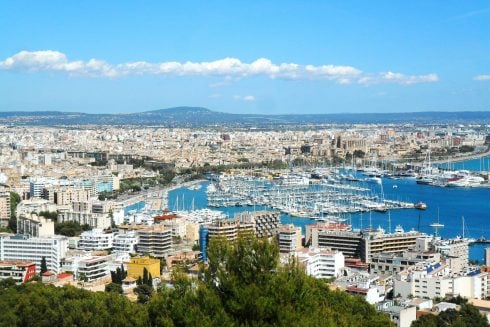SPAIN’S housing market continues to burn brightly, with both purchase and rental markets seeing near-double digit price rises year-on-year.
Homeowners and landlords will be pleased to learn that house prices have risen 8.6%, while rentals have exploded 10.4%, according to new data from housing portal idealista.
To buy a home in Spain will now cost you an average of €2,176 sqm – a new record for the country.
The Balearics continues to be the epicentre of Spain’s price spiral. At €4,512 sqm, it is the most expensive in Spain – up 13.2% on last year.

Meanwhile, rental prices have skyrocketed a barely-believable 18.7% in Palma de Mallorca and 14.6% across the Balearic Islands, where renters pay €18.9 sqm.
The Madrid Community continues to be a central point in Spain’s price surge. At €3,554 sqm, it is one of the most expensive regions in Spain – up 13.2% on last year.
At the same time, rental prices have soared by 16.1% in Madrid, with renters across the Community paying €18.1 sqm.
The Valencia Community remains a significant area in Spain’s housing price increase. At €2,430 sqm, prices have risen 12.3% over the past year.
READ MORE: House hunting on a budget in Spain’s Andalucia? These are the cheapest towns for 2024
Rental prices have also surged, with a 14.1% increase across the region. In Valencia city, renters are now paying €14.1 sqm.
The Canary Islands have also seen notable price increases, with housing prices reaching €2,682 sqm, marking a 16.8% rise over the last year.
Rental prices in the Canary Islands have also jumped, with an 18.6% increase in Santa Cruz de Tenerife and a 14.3% rise across the islands, where renters now pay €13.9 sqm.
Andalucía continues to experience a significant housing price hike. At €2,430 sqm, prices are up 8.9% from last year.
Property expert Adam Neale of Terra Meridiana foresees the current trends only increasing, which will exacerbate the precarious living situations of millions of people across Spain.
“Lack of supply is partly to blame for rising prices and unfortunately we do not see the situation changing anytime soon,” Neale told the Olive Press.
“In fact, the lower interest rates anticipated to come into effect will only exacerbate the problem,” he added.
Across Spain, a staggering 47 provinces out of 50 (94%) have seen higher prices compared to last year.
The most significant increases were recorded in Santa Cruz de Tenerife, where seller expectations rose by 18.6%.
READ MORE: ‘I’m a British expat and just bought a house in Spain – here’s what I wish I knew beforehand’
This was followed by rises in Las Palmas (14.3%), the Community of Madrid (13.2%), and the Balearic Islands (13.2%). Prices in Málaga increased by 12.5%, while Alicante saw a rise of 12.2%.
In contrast, the three provinces that didn’t see a price rise over the past year were the unfashionable trio of Ourense (-2.8%), Ciudad Real (-0.7%), and Córdoba (-0.4%).
Meanwhile, rental prices have increased by 11% across the region, with Málaga seeing a rise of 13.6%, and renters paying €15.3 per sqm in the city.
Barcelona remains the priciest capital for rentals, with rates at €21.6 per sqm, having increased by 14.3% over the past year.
Madrid follows closely at €19.8 per sqm, with a 16.1% rise, and San Sebastian at €17.6 sqm, up by 7%.
Other high-ranking cities include Palma, where prices reached €17.2 sqm, reflecting an 18.7% increase.
In Malaga, prices rose to €14.5 sqm, up by 13.6%.
Both Valencia and Alicante saw prices at €14.1 sqm, each with a 14.1% increase. Seville’s prices climbed to €14.5 sqm, marking a 7.8% rise, while Bilbao saw a 6.7% increase, with prices at €14.5 sqm.
Click here to read more News from The Olive Press.








